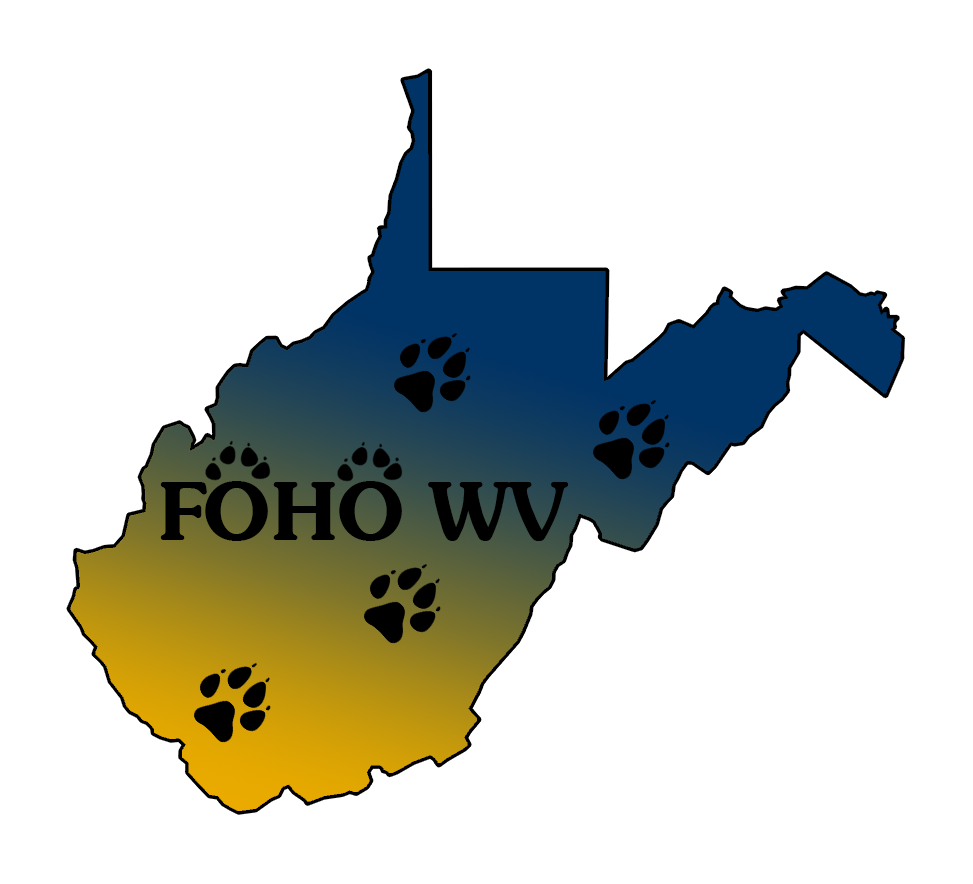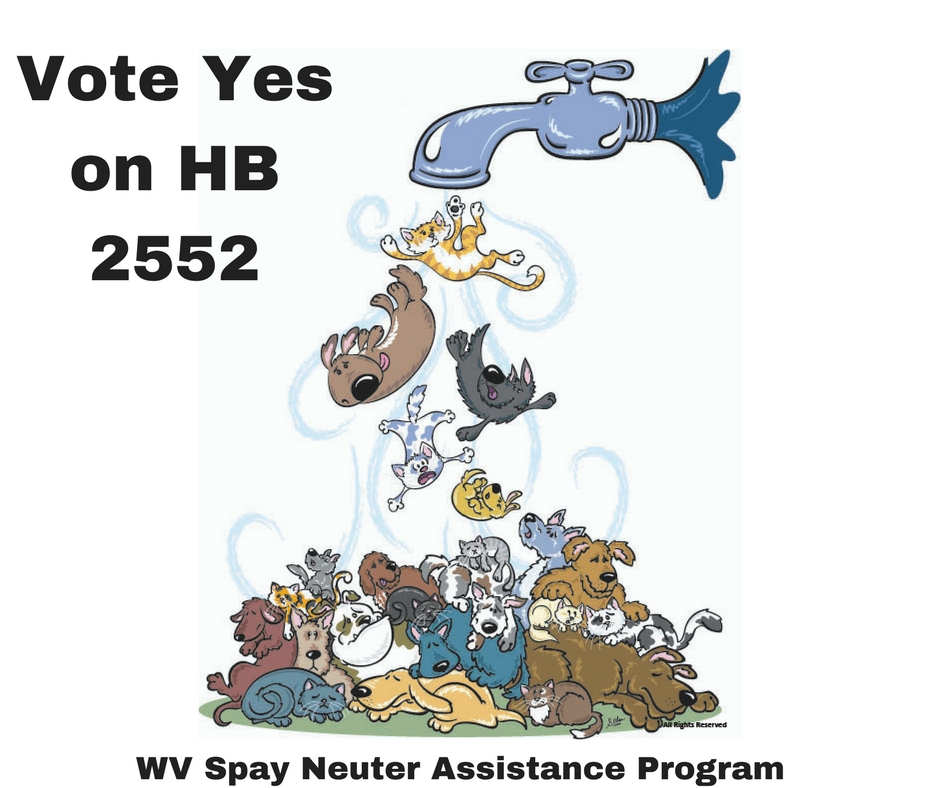New WVDA March 2024 Market Bulletin!
You must read this article. There is so much background on the WVSNP program, highlighting interviews with Theresa Bruner, the FOHO WV President, Andy Yost, WVDA Program Director of WVSNP, Kathy Stone, President of Operation Fancy Free, Carrie Curtis, Board President and Alyssa Shade, Director of the SNIP WV Spay Neuter Clinic and finally and importantly, WVDA Commissioner Leonhardt whose stewardship of this program has made it successful.
Make sure to share with your legislators, your commissioners and supporters so they will understand how important this program is to our state and your group.
Current status of the WV Spay Neuter Fund w/thank you from Comm. Leonhardt 2024
The current WV Spay Neuter Program administered by the DOA as a consumer protection initiative involving pet food registered in our state attracted the interest of MZM, an out of state donor. Working through FOHO WV who led the effort to pass the Spay Neuter program through the state legislature in 2017, they offered $4,050,000 dollars to further support the program funding which generates approx. $450,000 per year. The entire WVSNP program & MZM (out of state donor) is 99.9% funded by out of state funding and well administered by the WV Dept. of Ag. WV tax payer money is being saved every year by lowering the number of homeless animals entering our shelters, vaccinating more animals against rabies, and placing more dollars into local communities to have these cats and dogs altered.
FOHO WV appreciates the support received from Commissioner Leonhardt (see attached/below). He gets it and has earned our support.
In turn, please thank your local animal welfare groups that receive the WVSNP grants and let your county commissioners and legislators know that you expect their continued support to reduce pet overpopulation beyond 2027 when the funding will need extended.
Past history of the WV Spay Neuter Assistance Fund.
(Please note this logo was loaned to FOHO WV from M-SNAP during our spay neuter campaign. It was used on our mailings and was influential in our success. Our thanks to M-SNAP (Mountaineer Spay Neuter Assistance Program) for their generosity. We are showing it here as part of our history in obtaining our state fund).
The WV Spay Neuter Assistance Program Fund was established by the WV Legislature in 2013. The rules were completed in 2015. The program was funded in 2017 and has completed 7 years of operation under the administration of the WVDA. Nearly 70,000 animals have been altered since the program began.
History of the fund thru 2017:
$900,000 was original amount asked for, but it was cut in half. There are ways to fund WV SNAP without taking money from our overburdened WV budget. The Pet Food Industry sold approx. $176 million in sales in WV in 2015. They register their pet food brands (every single dog food and cat food individual product requires registration charge) already in WV; so raise that fee by $100 on 9,000 brands = $900,000 for spay neuter! Unfortunately, the fund was cut by 1/2 and now we receive $450,000 yearly.
By 2017, we had a fund established & rules and regulations, just no funding. A reminder that the Fund was established in 2013 with SB 202 sponsored by Sen. Pres. Kessler. Then the Rules passed in 2015! Rules bill was SB 199 passed, which was a bundled Rules bill that included the WV Spay/Neuter Fund rules (SB 216) that FOHO WV members worked on with Commissioner Helmick’s DOA staff in developing. ASPCA Michael Barrett was instrumental in writing our rules also. So now we just need the funding which finally passes in 2017 as explained below.
A Surcharge on manufacturers’ pet food fee paid for a permit to sell products in WV already exist at the WV Dept. of Agriculture. This was the most logical and cost effective way to raise the funding for a statewide spay/neuter program. There is already a mechanism that requires pet food manufacturers/distributers to buy a license or permit to sell their products in our state. This is done through the Agriculture Department. A surcharge would be added to this already existing permit fee for pet food only. This would not include livestock or poultry feed. Specialty food, such as for birds, fish, etc., is not included in the surcharge. This would become a consistent stream of funding. Most important is the fact that this is not a retail or consumer tax on WV citizens. The pet food companies don’t necessarily need to pass this cost on to the consumer; but even if they did, it would equal approximately 1.00 per year per pet, and only pet owners would pay this very small extra cost. This option with 9,000 brands registered in WV could raise over $900,000 per year for Spay Neuter! Now in our 5th year, the good news is that pet food cost were not passed on in WV!
- Income tax check off would not be dependable or consistent. People do not respond well to giving more money after paying their taxes and research has noted that the amount raised in this manner is not likely to be large.
- Surcharge on rabies vaccinations. Veterinarians do not like this idea. They cite additional work on their end and fear that clients will not have their pets vaccinated if they increase the price. The spay/neuter program will be completely dependent on the cooperation of the veterinarian community; therefore, any attempt to use this funding method could potentially be devastating to the success of the program.
- Raising the dog license/registration fee would be perceived as an increase in taxes. Raising the fee is actually a reasonable idea as the fee has been $3.00 for over 50 years. That money increased on each license fee would need to be designated for spay neuter.
- A yearly appropriation from the legislature. This would need to be a large enough amount to be effective and be continued every year. It could not be guaranteed. Not dependable and pits us against other worthy WV groups who need funding.
Suggestions on obtaining grants has been made too. Our concern with grants is that is the way most animal advocacy groups are forced to operate in the state so now we are competing against other worthy animal advocacy groups. We know how competitive it is to get grant funding and it provides no ongoing source of funding. We did have the fortunate occurrence of obtaining a grant from an anonymous donor for our spay neuter effort in WV in 2022 for $1.35 million dollars. Our first year in 2023 was an overwhelming success. Check out our data charts post.
According to the 2016 US Census estimates, West Virginia has 883,197 households. Calculating 65% of WV households (574,078) with pets and extrapolating the 2015 U.S. Pet Food Sales number of $29.49 billion, we estimate the pet food industry had sales of $195 million in West Virginia in 2015.
Not a dime out of the budget but from the out-of-state Pet Food Industry which by their own admission have increased their profits over 22% from 2014-2015.
We proposeed an increase to the surcharge on Pet Food brands registered with the WV Dept. of Agriculture as a solution for funding our WV State Spay Neuter Fund. Using the experience of Maine and Maryland, and with the grant from the ASPCA and others, this would be a beginning to help WV save millions of dollars and lives.
Thanks to the ASPCA for their past support of our spay neuter effort in West Virginia.
Data Sources:
2014-15 Vet Report with 32 Counties Reporting/ two known No Kill not reporting2015-16 American Pet Product’s Association National Pet Owners’ Survey
Survey of 38 counties in WV in 2015
2015 pet food sales data from http://www.petfoodindustry.com/blogs/7-adventures-in-pet-food/post/6038-pet-food-sales-update-us-spending-up-22-in-2015http://www.americanpetproducts.org/press_industrytrends.asp2014 US Census estimate
Here are three of the commercials we did to promote our spay neuter campaign in 2016-2017.

